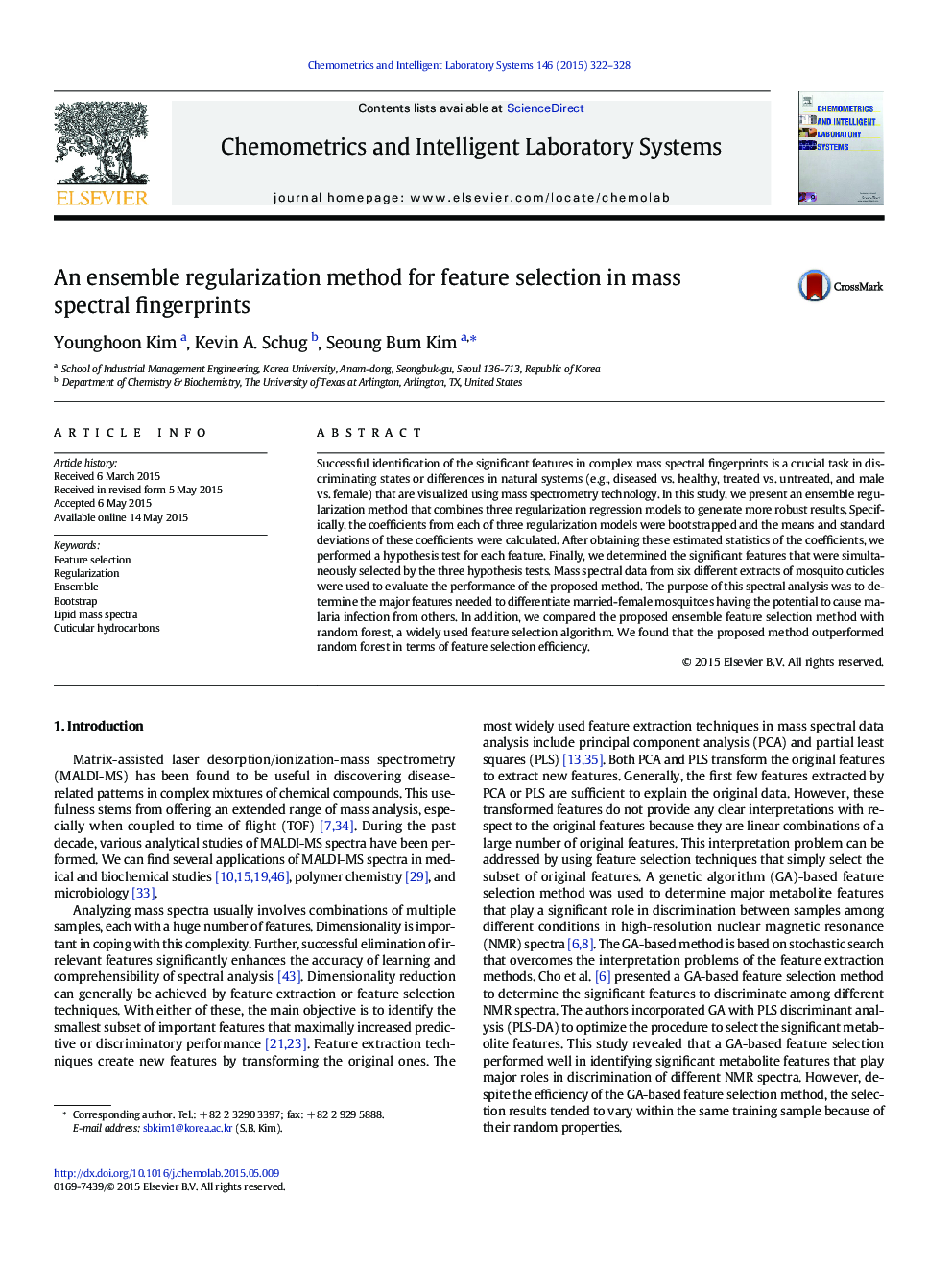| Article ID | Journal | Published Year | Pages | File Type |
|---|---|---|---|---|
| 7563111 | Chemometrics and Intelligent Laboratory Systems | 2015 | 7 Pages |
Abstract
Successful identification of the significant features in complex mass spectral fingerprints is a crucial task in discriminating states or differences in natural systems (e.g., diseased vs. healthy, treated vs. untreated, and male vs. female) that are visualized using mass spectrometry technology. In this study, we present an ensemble regularization method that combines three regularization regression models to generate more robust results. Specifically, the coefficients from each of three regularization models were bootstrapped and the means and standard deviations of these coefficients were calculated. After obtaining these estimated statistics of the coefficients, we performed a hypothesis test for each feature. Finally, we determined the significant features that were simultaneously selected by the three hypothesis tests. Mass spectral data from six different extracts of mosquito cuticles were used to evaluate the performance of the proposed method. The purpose of this spectral analysis was to determine the major features needed to differentiate married-female mosquitoes having the potential to cause malaria infection from others. In addition, we compared the proposed ensemble feature selection method with random forest, a widely used feature selection algorithm. We found that the proposed method outperformed random forest in terms of feature selection efficiency.
Related Topics
Physical Sciences and Engineering
Chemistry
Analytical Chemistry
Authors
Younghoon Kim, Kevin A. Schug, Seoung Bum Kim,
